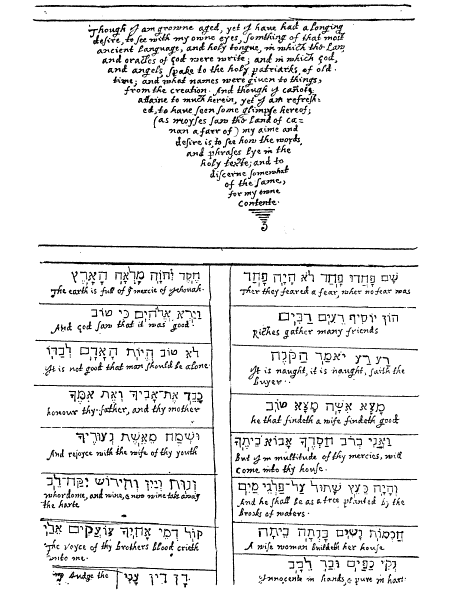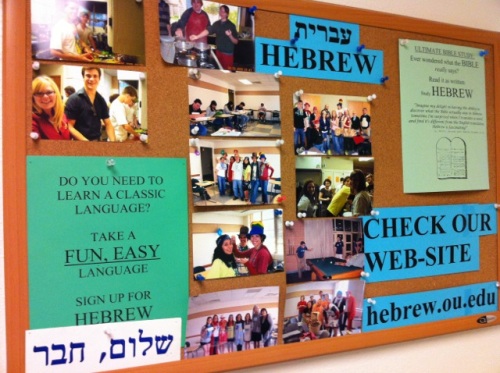The following is my silly approach to teaching Hebrew students about the gutteral letters. I often try to tell a story (apocryphal, to be sure!) with certain features of Hebrew phonology and orthography as an aid to memory. We often remember data when there’s a memorable story or pattern around which to organize the data. So I talk about things in my Hebrew classes like “The Gutts Gang,” the “Red Ryder Problem,” and the “Borg Problem.” I’ll share these as time goes on. For now, enjoy this news flash that Hebrew is afflicted by gang activity of the most distressing kind. But if we learn how to tame the Gutts Gang, maybe in time we will stop hating Hebrew’s gutts. 🙂
Warning: The Hebrew font is terribly small and my WordPress set-up doesn’t permit me to increase it (as far as I can tell!). So if you want to see this better, increase the viewing size of your browser window by keeping the CONTROL key pressed and clicking on the “+” key until the size is appropriate. To decrease the size, keep the CONTROL key pressed and click on the “-“. Second, my accent marks are not showing up *above* the stressed syllable, but beside it. If anyone knows how to fix this (I use Cardo fonts in my word processor), please let me know!
————
Ross Lessons 6
Gutterals: The Gutts Gang
Ever heard of the notorious street gangs of Los Angeles–the Bloods and the Crips? Well, there is a bit of “gang activity” in the Hebrew language. This gang runs around, wreaking havoc and causing trouble throughout Hebrew. They’re called the “Gutts Gang,” and they consist of the following gutteral letters:
ר / א ה ח ע
In reality, only the first 4 letters are initiated, full-fledged members of the Gutts. The fifth letter, ר, is a Gutts-wanna-be. Sometimes he acts like a Gutt because he wants to be initiated, but he’s not an official member of the gang.
You can spot one of the Gutts from a mile away. No, it’s not because they wear the colors red or blue. It’s because of the kind of problems they cause for polite, linguistic society (that’s you–the student!). Here’s a short summary of the characteristics of the Gutts: =============================================
The Gutts Gang: ר / א ה ח ע .
1. All: No DF inside.
2. All except ר: No VS under; instead, takes CS. [SS is OK.]
3. All except ר: Prefer A-class vowels/CS. [But א often prefers segol.]
=============================================
Let’s talk a little about these characteristics.
1. If you can’t put a DF (dagesh forte) inside a Gutt, then you normally either lengthen the preceding vowel (compensatory lengthening), or you leave the preceding vowel short but treat the syllable as if a DF were present, closing the syllable (implied/virtual doubling). For ex., to make a noun definite, you normally attach הַ to the beginning of the noun, with DF in the first letter of the noun: הַמֶּ֫לֶךְ, the king. But, since עִיר begins with a Gutt, the ע rejects DF and the paṯaḥ of the article compensatorily lengthens: הָעִיר, the city.
2. Sometimes it’s necessary, due to changing stress and syllable structures, to reduce a vowel to a VS (vocal shewa). Since a Gutt can’t take a VS below it, the VS will be replaced with a CS (compound shewa). For example, the plural of עֶ֫בֶד (servant) should be עְבָדִים, with VS under the ע. However, due to #2, we have CS instead: עֲבָדִים.
3. Gutts have a tendency to change the vowels under them, and/or right before them, to a-class. For ex., the normal vowel pattern for singular segolate nouns is the double-segol: מֶ֫לֶךְ (a king), כֶּ֫סֶף (silver, money). But if the middle letter is a Gutt, then the segolate noun’s double-segol pattern changes to double- paṯaḥ: נַ֫עַר (a youth).
You need to memorize these 3 characteristics. We will have opportunity, over the course of the class, to see how these Gutts Gang characteristics affect different grammatical situations. If you learn these now, then later, when we face an “irregularity” related to gutterals, you’ll actually realize that what you’re seeing is not really an exception to what you’re learning. Instead, you will simply be applying something you already know (gutteral characteristics) to new linguistic information.



